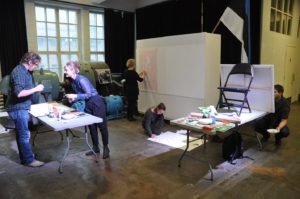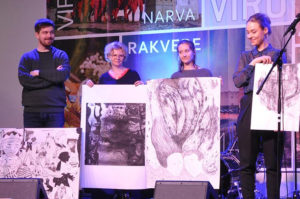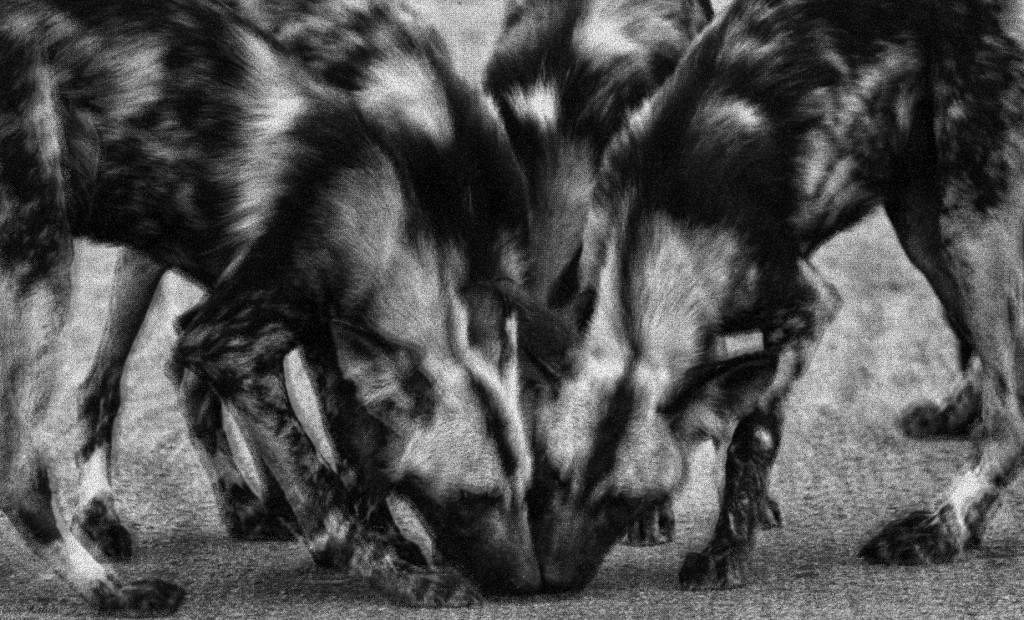Hannah Harkes is an artist who works in two, three, and four dimensions.
Articles by admin
Aries, Philippe (1981) The Hour of Our Death. London: Allen Lane (preface/conclusion)
Hypothesis, proposed previously by Edgar Morin, 'there was a relationship between man's attitude towards death and his awareness of self, of his degree of existence, or simply of his individuality' (Aries, 1981: 602).
Four psychological themes: awareness of the individual / defense of society against untamed nature / belief in an afterlife / belief in the existence of evil (Aries, 1981: 603)
Five models: the tame death / the death of the self / remote and imminent death / the death of the other / the invisible death (Aries, 1981: 603)
In the tame death the dead sleep. Death is evil.
In the death of the self the dead are active individuals. Biography continued after death. 'This new eschatology caused the word death to be be replaced by trite circumlocutions such as "he gave up the ghost" or "God has his soul." (Aries, 1981: 606). This model differs from the previous in respect to 2 themes - awareness of the individual; belief in the afterlife. Body becomes concealed.
In remote and imminent death (late 1500s...1700s?..the Enlightenment..) the savagery of death returns - the fear of being buried alive. Change of 1 theme - defense of society against untamed nature.
In the death of the other romanticism, following industrialisation and agricultural developments, led to passions without limits or reason. All 4 themes were transformed. Family replaced community/individuality, and privacy (a particular relation with select others) became important. Death was now neither tame nor wild. 'The compromise of beauty was the last obstacle invented to channel an immoderate emotion that had swept away the old barriers' (Aries, 1981: 610). Death ceased to be associated with evil. Evil and nature changed places. The afterlife theme changed - hell went, heaven became a reunion. For the non-religious, the reunion was in dreams, the strength in memory.
In the invisible death the themes continue, though the effect seems opposite. Privacy has become more demanding. The intimacy of final exchanges lost to the lie, the denial. Medical technology has defeated untamed nature, so the community no longer feels responsible for looking after its members' deaths. Solidarity and collectivity has gone. We are now more ashamed than afraid of death. This comes with the decline of evil. Now - defeat (silence or indifference/normalisation). The horrors of the hospital mean death is no longer tame. 'The belief in evil was necessary to the taming of death; the disappearance of the belief has restored death to its savage state' (Aries, 1981: 614).
.Smith, J. Z. (1998) Religion, Religions, Religious. In Taylor, M. C. (ed) Critical Terms for Religious Studies. Chicago: University of Chicago Press.
Attempts to define the term, 'religion' began in the 16th century. Since this time, there have been problems, as religion is...
1. A category imposed on people from outside. 2. Thought to be a ubiquitous human phenomenon. 3. Familiarity (to impose). 4. Anthropological, not theological.
Eden understands religion as based upon belief, whereas Cieza focuses more on behaviour.
The reformation / protestantism marked a shift in focus from ritual/customs to belief/piety.
Four categories emerged – Christian, Judaism, Mohametanism, Idolatry – the plural religions “forced a new interest in the singular, generic, religion”. In the latter part of the 17th century, the term natural religion became common.
One branch of study, chiefly anthropological, assumed an innate truth which many religions touched upon. This approach favoured the acknowledgment of similarities and was based in inter-Christian study. A second approach was more historical and looked at things which the different main religions held in common. Comparison highlighted differences. These two simultaneous lines of study led to a blurring of truth and origin.
David Hume argued that religion is not innate, for “scarce any two men” agree.
James H. Leuba's Psychological Study of Religion (1912) lists 50 different definitions of religion.
'The anthropological definition of religion that has gained widespread assent among scholars of religion, who both share and reject its functionalist frame, is that formulated by Melford E. Spiro (1966, 96), “an institution consisting of culturally patterned interaction with culturally postulated superhuman beings.” ' (Smith)
NOTE: The least troublesome definition of religion in my mind is “anything which anyone who calls themselves religious calls religion”. Just as anyone who introduces themselves as an artist can name something art. It may not be popular art or religion. It may be appreciated as such by only one person. People may call it “bad, offensive, insincere” art or “bad, offensive, insincere” religion, but it fits the category, nonetheless. Take for instance the flying spaghetti monster.
.Rotar, Marius (2013) History of Modern Cremation in Romania. Cambrdge: Cambridge Scholars Publishing. 1-18 (Translation to English: Ms Monica Losonti and Dr Helen Frisby)
NOT READ
.Davies, D. J. (1996) The Sacred Crematorium. Mortality, 1 (1): 83-94
Davies looks at how crematoria cultivate a sense of the sacred. He begins by outlining the historical rise of cremation from the late 19th century, explaining the debate of the rite in relation to religiosity. Lindsey Jones' term 'ritual architectural event' is introduced as focusing on three elements, "(i) on the actual built form, (ii) on human beings burdened with expectations and religious opinions and (iii) on the ceremonial occasion which brought buildings and people into an involvement with one another" (Davies, 1996: 84). Looking first at the built form of the crematorium, Davies describes the main chapel, usually furnished with religious and ritualistic symbols, as distinct from the utilitarian workshop area behind the cremator. Davies looks next at the mode of entry and exit in the design of crematoria, noting that in Britain, it was common to have different doors for each, to quickly and orderly move the congregation in time for a new group arriving. Davies summarises the built form as lessening the sacred sense of crematoria, as previously mentioned features imply a transitional space. Turning to Jones' second element, Davies looks at the religious expectations with which people approach the place and how these have changed over time. Whilst people once grew up experiencing churches and chapels, the expected characteristics of crematoria is now more likely to be gleaned from films, television and other media. Only after personally experiencing the crematorium do people attach a sense of the sacred to such spaces. "In other words, the sacred status of crematoria in later 20th century Britain comes more from personal experience than from inherited tradition" (Davies, 1996: 86). Addressing Jones' third element, Davies points out the technical necessities of crematoria which link ritual with function and tie the congregation to the place.
Looking next at Harold W. Turner's theories, Davies asks whether the crematorium is a divine place of the deity or an emotionally neutral place for the congregation. The majority of British crematoria were given a religious dedication when opened. Crematorium architecture tends to reflect church architecture, with alter, stained glass windows and often an organ.
"In this sense an official sacred status is conferred upon them functionally" (Davies, 1996: 89) but still pay local taxes. In Turner's terms, the crematorium is a place of the deity (domus ecclesiae) during the funeral service, as religious personnel often lead the service, and it is the neutral place of the congregation (domus dei) during subsequent memorial visits. Since the 1970s, there has been a growing trend for people to scatter ashes outwith the crematorium area, in a place of special significance, making the crematorium a "means to an end" (Davies, 1996: 92).
"Between the 1890s and the 1990s crematoria underwent a major change of status as they were increasingly invested with a sacred value" (Davies, 1996: 83). The first crematorium opened in Estonia was in Tallinn in 1993 (Loomulik Surm, 2016)."By the 1990s some 70% of British funerals took the form of cremation with the majority conducted by ministers of religion" (Davies, 1996: 83).
NOTE: "Pentrebychan in North Wales and at several Swedish sites, including Asplund’s Stockholm Crematorium, which have been analysed in terms of the relation between spirituality and cemeteries" (Davies, 1996: 93). .
Walter, T. (1996) A New Model of Grief: Bereavement & Biography. Mortality Vol 1(1): 7-25.
Tony Walter introduces a model of bereavement based upon his own personal experiences. He positions this model in opposition to what he deems the 'dominant model' (Walter 1996: 7), which encourages a 'working through and resolution of feelings' (Walter 1996: 7), with the purpose of detachment. Walter's process however advocates talking about the deceased, preferably with others who knew them, in order to 'find an appropriate place for the dead in one's life' (Worden in Walter 1996: 12).
As the study group consists of one person, the findings cannot reasonably be applied to the wider public. This is not necessarily a problem if the paper simply lays groundwork for a future objective study and Walter does acknowledge the need for wider research (1996: 20). Subjectivity again proves problematic in the notion of a 'competing discourse' (Walter 1996: 21), which Walter's argument revolves around. Given his emotional involvement, the author may have a heightened sense of his own grief and a feeling that his bereavement cases are special. His proposed model is arguably not at stark odds with common practice and again, he recognises this indirectly, stating, 'the model I am proposing may supplement, rather than replace, the conventional wisdom' (Walter 1996: 20). The article itself comes across as a working through of the author's feelings; his grieving process appears to have led him towards detachment from his more intimate links with the deceased's living identity. Despite the subjective lens, the article raises many important general points about such issues as the benefit of open discussion, the effects of migration and longevity on social connection, and the need to recognise various different modes of grieving.
.Copyright © 2025 | MH Purity lite WordPress Theme by MH Themes




